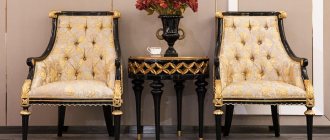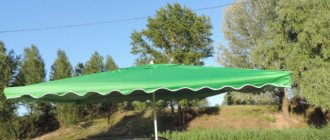02/08/2022 14,772 Light and sound devices
Author: Ivan Baranov
Many car enthusiasts, in order to improve the appearance of their car, tune their “Swallow” with LED lights. One of the tuning options is a running turn signal, which draws the attention of other road users. The article provides instructions for installing and configuring turn signals with running lights.
[Hide]
Assembly instructions
LED lamps are semiconductor elements that glow when exposed to electric current. The main element in them is silicon. Depending on what impurities are used, the color of the light bulbs changes.
Photo gallery “Possible options for dynamic direction indicators”
1. Dynamic direction indicators
2. Dynamic running turn signal
3. LED tail lights
Tools and materials
To make a running turn signal with your own hands, you will need the following tools:
- soldering iron;
- side cutters or pliers;
- soldering iron and soldering material;
- tester.
You need to prepare fiberglass laminate from consumables. It is needed for the manufacture of a printed circuit board on which the semiconductor element will be placed. The required LEDs are selected. Depending on the characteristics of the LEDs and the current and voltage values of the on-board network, the characteristics of the protective resistors are calculated. Using calculations, the remaining components of the network are selected (the author of the video is Evgeny Zadvornov).
Work sequence
Before making turn signals, you need to choose a suitable scheme.
Scheme for manufacturing running turn signals
Then, based on the diagram, make a printed circuit board and apply markings on it to place future elements.
The assembly consists of a sequence of actions:
- First, you should turn off the power to the car by disconnecting the negative terminal from the battery.
- Next, you need to remove the old turn signals and carefully disassemble them.
- Old light bulbs should be unscrewed.
- The joints should be cleaned of glue, degreased, washed and allowed to dry.
- In place of each old element, a new running light turn signal is installed.
- Next, assembly and installation of the lights is done in the reverse order.
- After installation, the wires are connected.
At the next stage, an additional stabilized power source is connected to the network. Its input receives power from the intermediate relay, and the output is connected to a diode. It is better to place it in the instrument panel.
When connecting LEDs, you must ensure that the anode is connected to the plus of the power source, and the cathode to the minus. If the connection is not made correctly, the semiconductor elements will not light up and may even burn out.
Flexible LED DRL strips
Schematic diagram of a brake light in the form of running lights
How to make a do-it-yourself lambda probe circuit
The brake light is used to warn drivers of vehicles driving behind that the driver is braking. An additional brake light with LEDs is very important, since during heavy traffic it is sometimes unclear whether the brake light is on or the lights are on.
Running lights on LEDs attract additional attention from drivers, and the advertising effect will work. Thus, rear traffic participants will have additional time to react to braking (video author - evgenij5431)
Next, we’ll look at how to make an LED brake light with your own hands. Below is a detailed description of the scheme for creating changing lights. To implement dynamic lights, red LED lamps are used, which are switched on in pairs. After switching on, the lights in the center light up first, and then spread out from the center to the edges.
LEDs are controlled in pairs. LED lights HL1 and HL2 light up first, then HL3 and HL4. After the previous pair of lights goes out, the next one lights up. The bulbs are lit in pairs until the last pair HL11 and HL12. When the last pair lights up and goes out, the process repeats.
The first LEDs are in the middle, the rest are arranged in pairs at equal distances to the edges. The algorithm of running fire from the center of the brake light to its edges has actually been implemented. You can get creative and come up with a different algorithm according to which each light bulb will blink.
Schematic diagram of running LEDs
Features of installation and configuration of running direction indicators
You can install dynamic turn signals instead of conventional LEDs. To do this, the repeaters are removed from the mirrors, the board with LEDs and current-limiting resistors is dismantled. On the repeater you need to tear the glass away from the body. Then you should carefully cut out the reflector and remove it.
In place of the remote reflector, an SMD 5730 board is installed, on which yellow LEDs are located. Since the repeater has a curved shape, the board will have to be delaminated and bent a little. You need to cut off the part with the connector from the old board and solder it to connect the controller. Then all components are returned to their place.
To adjust the timing of the running LED lights, a switch is soldered to the microcontroller. When a suitable speed is found, jumpers are soldered in place of the switch. When connecting two pins to ground, the minimum time between LED flashes will be 20 ms. When the contacts are closed, this time will be 30 ms.
LED dynamic turn
Price issue
You can make a running light turn signal from daytime running lights. Their cost is 600 rubles. In this case, you can use “pixel” RGB LEDs as light sources in the amount of 7 pieces for each running turn signal. The cost of one element is 19 rubles. To control the LEDs, you need to purchase an Arduino UNO costing 250 rubles. Thus, the total cost will be 1060 rubles.
Loading …
RunLed - running LED turn signals for cars
DIY generator voltage regulator relay diagram
RunLed – modern running LED repeaters of car turns or stops. Let's consider the principle of installation and operation of RanLed, equipment, characteristics and price. At the end of the article there is a video review of RunLed.
- What is RunLed
- Advantages
- Installation and operation principle
- Price and equipment RunLed
- Video
RunLed – running LED repeaters of vehicle turns and stops. Thanks to this technology, your car will easily stand out from the crowd. Today, this is one of the revolutionary ways to tune a car, without violations or making technical changes to the design. The manufacturer promises not only to highlight your car's style, but also to ensure stable operation of the installed parts.
Unlike car taillights, the new LED-based RunLeds will never fade, do not burn out, and can withstand heavy overloads. According to the manufacturer, the technology can last for hundreds of hours, and the kit includes everything for quick installation; everything will take a maximum of 15 minutes.
Connection via a 4-pin relay from a generator or oil sensor
The following two methods have a common basis and imply the operation of daytime running lights only after the engine is started. The circuit for switching on DRL from the generator is based on switching a four-contact relay and a reed switch.
The DRL relay contacts are connected as follows:
- 30 – to the positive terminals of LED modules;
- 85 – to the positive wire to the dimensions;
- 86 – to any reed switch output;
- 87 and the second terminal of the reed switch - to the “+” of the battery.
After checking the reliability of all contacts, proceed to setup. To do this, start the engine and, by moving the reed switch near the generator, achieve its activation and a stable glow of the DRL. Then the reed switch is hidden in a thermal tube and fixed in the found place using nylon ties.
At the moment of starting the engine, and then the generator, the contacts of the reed switch and relay close, supplying power to the LED running lights. In this case, the side lamps remain turned off, since the current through the relay coil is small to light them.
In the absence of a reed switch, you can power the DRL from the oil pressure sensor. In this case, pin 86 is connected to the oil pressure lamp. The rest of the circuitry is duplicated.
Both schemes have a common drawback. They cannot be used if LEDs are installed in the dimensions.
Controller max7219
The max7219 controller is a 64-cell communication and memory interface unit for controlling LEDs. In memory, all data is stored in the form of a two-dimensional array.
Information is transferred via the SPI interface. SPI is a three-wire interface for two-way data transfer between devices. You can read more about how this interface works here.
To interact between the controller and the Arduino board, only three channels are used: DIN, CS, CLK.
You can connect up to four such LED modules to the standard connectors of the controller board, creating an 8 x 32 point display. To increase the number of connected segments, you can assemble a simple multiplexer that will switch control signals to the desired module. In this way, it is possible to display information on dozens of matrices. The operation of all LCD displays is based on this principle.
To facilitate the transfer of data flow to Arduino, there is a special library LedControlMS.
This is a video of an example of the library working with an LED display:
Safety regulations
When working with electronic devices, adhere to the following safety standards:
- All live parts are insulated so that water does not get on them, so that they cannot be touched with a bare part of the body. 800 mA is not the amount of current that, for example, a Tesla transformer produces, but it is difficult not to feel it.
- The soldering iron is used only in conjunction with a comfortable stand, on which the tool is placed after work, otherwise there is a high probability of something melting, burning or getting burned.
- The diode strip has all connection contacts without insulation. When it is in working condition, do not touch it with your hands or metal objects.
The soldering iron and radio components are placed further apart from each other so as not to accidentally burn elements sensitive to overheating.
Contents and price of the RunLed set
At first glance, it seems that such RanLed LED tuning costs a lot of money, but in fact the price is moderate and affordable to everyone. The RunLed kit includes all the necessary parts and components for proper installation; the manufacturer took care in advance, thinking through every little detail.
The RunLed kit includes:
- multifunctional LED strip;
- Control block;
- installation guide;
- manual.
The manufacturer provides a guarantee for all RunLed parts, and the buyer has the right to refuse the order in the first 14 days without explaining the reason for the return. If one of the elements of the set breaks, the manufacturer undertakes to replace it or return the full cost of the set. In this case, the period for filing an application from the moment of sale to return should not exceed 6 months, and the purchase receipt and packaging must also be kept.
If the RunLed running LED turn signals were of poor quality, then the full price for the set will be refunded, including the cost of delivery. If the product is of proper quality, but is returned within 14 days, then the amount will only be for the RunLed set itself, shipping costs will not be refunded. According to the manufacturer, the average delivery time for a RunLed set by courier in the city is no more than a day (if the product is in a warehouse in the city). In this case, payment for delivery and goods will be paid in cash to the courier.
To other cities, delivery takes from 1 to 3 days, and the delivery cost will be about 245 rubles. As for postal delivery of the RanLed kit, the average time will be about 5-7 days, and payment will be cash on delivery only. There is no prepayment when purchasing a RunLed set, which means the risk of being deceived is 100% excluded, only cash on delivery by prior agreement. Ordering goods is carried out in 4 simple steps. After submitting the application, the manager calls back within 15 minutes to clarify and confirm the buyer’s data. As a rule, dispatch is carried out 2 times a day, which means that if you order in the morning, the goods will be 100% sent on the same day.
Video review of RunLed LED repeaters:
ATtiny2313 microcontroller for running lights
This device belongs to the AVR series of microcontrollers from the Atmel brand. It is under his control that a running light strip is most often made, since the performance characteristics of the model are quite high. Microcontrollers are easy to program, multifunctional and support the implementation of various electronic devices.
ATtiny2313 is made according to a simple design, where the output and input ports have identical meanings. Selecting a program (one of 12) on such a microcontroller is very easy, because it is not overloaded with unnecessary options. The model is available in two packages - SOIC and PDIP, and each option has identical characteristics:
- 8-bit general registers in the amount of 32 pieces;
- capabilities of 120 operations per clock cycle;
- 2 kB flash memory inside the system with support for 10 thousand erase and write cycles;
- 128 byte in-system EEPROM with support for 100 thousand cycles;
- 128 bytes of built-in RAM;
- 4 PWM channels;
- 8 and 16 bit counter-timer;
- built-in generator;
- convenient interface for various purposes and other functions.
The microcontroller has two types in accordance with energy parameters:
- the classic ATtiny2313 model has a voltage from 2.7 to 5.5 V and a current of up to 300 μA at a frequency of 1 MHz in activity mode;
- the ATtiny2313A (4313) variant has characteristics of 1.8-5.5 V and 190 μA at the same frequency.
In standby mode, the device has a power consumption of no more than 1 µA.
As already indicated, the microcontroller memory is equipped with 11 combinations of light circuits, and the ability to select all combinations of LEDs sequentially is the 12th program.
Communities › Electronic Crafts › Blog › Dynamic turn signals with auto-calibration
Developed a circuit for dynamic turn signals. The peculiarity of the circuit is that automatic calibration is organized for the pulse duration of the turn relay. Because On different cars, the duration of the turn signal is different.
The circuit analyzes three pulses in a row, and if their duration differs from the preset one, a new value is written to the memory and the LED line lights up at a different speed.
The influence of short presses on the lever, “thank you”, “polite turn signals” and blinking signals is excluded.
The circuit works without a constant plus. Main details: Attiny13. R1-10kOm, R8-4.7kOm. Stabilizer for 5V. Transyuks - any field n-channels. The photo shows a test board for tweaking the circuit (there are a few minor errors), so I don’t see the point in posting a file with the wiring. In the video, the board is launched from a test chopper emulator (several different pulse duration values).
Main advantages
RunLed running turn signals compare favorably with dubious and short-lived analogues from other companies. The following advantages set them apart from their competitors:
- Elementary and quick installation. The process, described step by step in the instructions, takes only 15 minutes and does not require special knowledge, and therefore can be performed even without experience.
- Versatility and multifunctionality. The gadget not only fits any model of domestic or foreign car, but also manifests itself in different qualities: parking lights, turn and brake signals, a tail light when driving, and lights flashing in an emergency.
- Strength and durability. Possessing premium quality, RunLed running turn signals will delight owners for many years. The LED strip is resistant to shock, moisture, extreme temperatures and can last up to 50,000 hours (5.7 years). The IP65 fuse protects the electronics from water ingress and overload.
- High intensity lighting ability. The powerful brightness of the LEDs on the device will ensure that they will be visible in any weather.
How to make a running “smart” turn signal for a car with your own hands
- Connection diagram
- Controller firmware
Let's consider creating a running turn signal like on an Audi, using the example of a headlight from a Renault Clio car. Let's make turn signals and DRLs in one device.
What you will need for this:
- LED strip consisting of ws2812b LEDs
- Arduino nano controller (can be used in any other form factor)
- Car charger for mobile phones or any voltage converter 12V->5V. Since the LED strip needs a voltage of 5V, we will use this charger as a voltage converter from 12V to 5V.
- 4 resistors 100 kOhm and 4 resistors 47 kOhm, as a voltage divider.
Connection diagram
- The Arduino controller must be connected to the car's network via a 12V -> 5V converter so that the voltage to the circuit comes from turning on the ignition.
- The positive wire from the operating turn signals is connected to pins 5 and 6 of the controller through a voltage divider made of resistors. Buttons for additional controller operating modes are connected in a similar way.
Controller firmware
Download a NEW sketch in which the number of diodes varies variably count here.
You can download the finished sketch in a file using this link.
To work with pixel LEDs you will need a library. You can install it as follows: Sketch -> Connect library -> Manage libraries. Next, enter the name of the library Adafruit_NeoPixel.h in the search menu and click the install button.
After that, insert the sketch into the program and replace the number of LEDs in the code (we use 7 diodes):
#include // include the Adafruit_NeoPixel library strip = Adafruit_NeoPixel(7, 7, NEO_GRB + NEO_KHZ800); //Initialize the first turn signal 7 diodes on the 7th digital output Adafruit_NeoPixel strip2 = Adafruit_NeoPixel(7, 8, NEO_GRB + NEO_KHZ800); //Initialize the second turn signal 7 diodes on the 8th digital output void setup() { pinMode(3, INPUT); pinMode(4, INPUT); pinMode(5, INPUT); pinMode(6, INPUT); strip.begin(); strip.show(); strip2.begin(); strip2.show(); } void loop() { { if ((digitalRead(5) == HIGH) and (digitalRead(6) == HIGH)) { //Alarm mode if a plus comes to pins 5 and 6 for(int k = 0 ;k
}
if (digitalRead(5) == LOW and digitalRead(6) == HIGH) { // one turn signal is turned on for(int k = 0; k
}
} } if (digitalRead(5) == HIGH and digitalRead(6) == LOW) { // turn on the second turn signal for(int k = 0; k
Color(255, 69, 0)); // R=255, G=0, B=0 — LED color } delay(60); strip2.show(); } for(int i = 0; i
Color(63, 17, 0)); // R=255, G=0, B=0 — LED color strip2.setPixelColor(j, strip2.Color(127, 34, 0)); // R=255, G=0, B=0 — LED color } delay(60); strip2.show(); } } } if (digitalRead(3) == HIGH) { // special signals mode, if we apply a plus to pin 3 for(int j = 0; j
Color(255, 0, 0)); // R=255, G=0, B=0 — LED color strip2.setPixelColor(i, strip2.Color(0, 0, 255)); // R=255, G=0, B=0 — LED color } strip.show(); strip2.show(); delay(20); for(int i = 0; i
Color(0, 0, 0)); // R=255, G=0, B=0 — LED color } strip.show(); strip2.show(); delay(20); } for(int j = 0; j
show(); delay(20); } } if (digitalRead(4) == HIGH) { // Strobe mode, if we supply power to pin 4 for(int j = 0; j
show(); delay(15); for(int i = 0; i
Color(0, 0, 0)); // R=255, G=0, B=0 — LED color strip2.setPixelColor(i, strip2.Color(255, 255, 255)); // R=255, G=0, B=0 — LED color } strip.show(); strip2.show(); delay(15); for(int i = 0; i
Color(0, 0, 0)); // R=255, G=0, B=0 — LED color } strip.show(); strip2.show(); delay(15); } } if( digitalRead(3) == LOW and digitalRead(5) == LOW and digitalRead(6) == LOW and digitalRead(9) == LOW) { for(int i = 0; i
}
Video of how our headlight works:
Switching on through dimensions or low beam
The second version of the DRL connection diagram involves using the power circuit of the side light bulb. To do this, the positive wire from the running lights is directly connected to the “+” from the battery. In turn, the negative wire is connected to the “+” of the side light, which is currently electrically neutral. As a result, the following current flow path is formed: from the “+” of the battery through the LEDs to the size, and then through the light bulb to the body, which serves as the minus of the entire circuit. Due to the low current consumption (tens of mA), the LEDs begin to glow, and the lamp spiral remains extinguished. If the driver turns on the side lights, then +12 V appears on the positive side of the side lights, the potentials on the DRL wires are equalized and the LEDs go out. The circuit goes into normal mode, that is, current flows through the side light bulbs.
Equipment and technical characteristics
For the convenience of customers, caring manufacturers have assembled a full-fledged RunLed set. It includes the following necessary elements:
- Multifunctional LED strip (made of non-toxic silicone);
- RGB backlight control unit (gives red, green and blue colors);
- Super double-sided tape;
- Instructions with illustrations;
Read more: VAZ 2101 interior, re-tensioning seat belts, which seats to install, instructions with photos and videos
The manual describes all possible operating modes of the device: alarm during an accident, brake light, left/right turns and backlight while driving. There is also a wiring diagram there.
What types of DRLs are there?
Typically, daytime running lights in turn signals are an LED unit that is installed instead of the standard turn signal lamp. But unlike a regular lamp, such a block can switch into two modes - blink like a regular turn, and simply shine with white light. To do this, it has orange and white LEDs, as well as a control unit that switches them according to the situation. Therefore, there are no problems with lighting.
There are other designs that also consist of bright LEDs. For example, a DRL with a running turn signal function is a flexible bar with LED blocks that can be mounted above or below the headlights. When turning on the turn, the LEDs simulate running lights in the direction of the turn, and when turned off, they light up all at once. Such flexible DRLs with a turn signal function are not suitable for all car models.
Some have a tracking function, when the brightness is reduced by half when the driver leaves the cabin, and illuminates the path in front of the car, and goes out after a few minutes.
Daytime Running Lights











